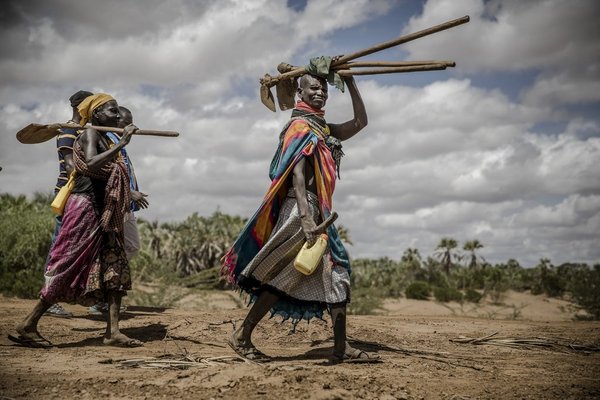 Read this article in French
Read this article in French- Share this article
- Subscribe to our newsletter
One-third of food production threatened by climate change
Climate change risks pushing one-third of food production outside safe climatic space, according to a study published in the journal One Earth in mid-May 2021. The study, led by Aalto University, Finland, assesses how global food production will be affected if greenhouse gas emissions are left uncut.
Rapid, out-of-control growth of greenhouse gas emissions may, by the end of the century, lead to more than a third of current global food production falling out of safe climatic space into conditions in which no food is produced today, the researchers say.
According to the study, this scenario is likely to occur if carbon dioxide emissions continue growing at current rates. In the study, the researchers define the concept of safe climatic space as those areas where 95 per cent of crop production currently takes place, thanks to a combination of three climate factors, rainfall, temperature and aridity.
Already vulnerable countries will be hit hard
The results show that threats affect countries and continents in different ways; in 52 of the 177 countries studied, the entire food production would remain in the safe climatic space in future. Changes in rainfall and aridity as well as the warming climate are especially threatening to food production in South and Southeast Asia as well as the Sahel region of Africa. These are also areas that lack the capacity to adapt to changing conditions.
Already vulnerable countries such as Benin, Cambodia, Ghana, Guinea-Bissau, Guyana and Suriname will be hit hard if no changes are made, the researchers warn - up to 95 per cent of current food production would fall outside of safe climatic space. These nations also have significantly less capacity to adapt to changes brought on by climate change when compared to rich Western countries. In all, 20 per cent of the world's crop production and 18 per cent of livestock production under threat are located in countries with low resilience to adapt to changes.
Desert zones expected to grow dramatically
If carbon dioxide emissions are brought under control, the researchers estimate that the world's largest climatic zone of today - the boreal forest, which stretches across northern North America, Russia and Europe - would shrink from its current 18.0 to 14.8 million square kilometres by 2100.
Should we not be able to cut emissions, only roughly 8 million square kilometres of the vast forest would remain, they say. The change would be even more dramatic in North America: in 2000, the zone covered approximately 6.7 million square kilometres - by 2090 it may shrink to one-third.
Arctic tundra would be even worse off: it is estimated to disappear completely if climate change is not reined in. At the same time, tropical dry forest and tropical desert zones are estimated to grow. We could see more than 4 million square kilometres of new desert around the globe by the end of this century, the researchers warn.
(Aalto University/ile)
More information at Aalto University website
Read the article Climate change risks to push one-third of global food production outside Safe Climatic Space





Add a comment
Be the First to Comment